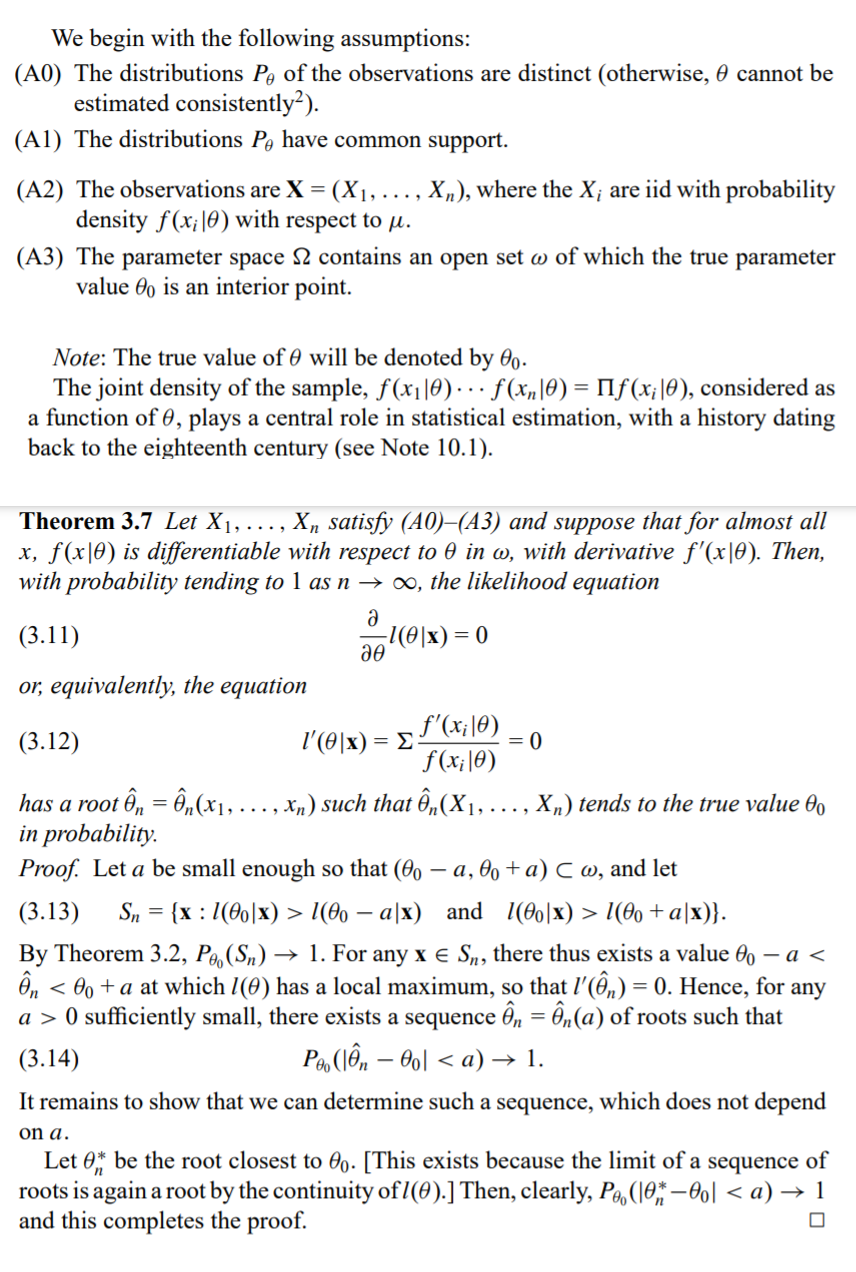I'm trying to prove that MLE from the proof of one theorem in Lehmann's "Theory of point estimation"
(the theorem is below) is a measurable function. I know that under some regularity conditions (e.g. stats.stackexchange.com/questions/430954/example-of-a-non-measurable-maximum-likelihood-estimator
or
https://math.stackexchange.com/questions/1251393/when-is-the-maximum-likelihood-estimator-measurable ) MLE is measurable, but it didn't help me to prove that the closest root from the proof is a measurable function.
The problem is as follows. By definition, an estimate is a measurable function. Even the existence of a measurable version of MLE is not so obvious, but here an extremum arises over the set of MLE. It is unlikely that a theorem from a classical book can be wrong, but how to prove it?
The theorem is here:
I think that in $(3.14)$ the set $|\hat{\theta}_n - \theta_0|$ may be not measurable (but I don't know counterexample).

